- Clone
- 6-His (See other available formats)
- Regulatory Status
- RUO
- Other Names
- polyhistidine-tag, hexa histidine-tag, 6xHis-tag, His6 tag, His-tag(TM)
- Previously
-
Covance Catalog# FITC-156L
- Isotype
- Mouse IgG1, κ
- Ave. Rating
- Submit a Review
- Product Citations
- publications
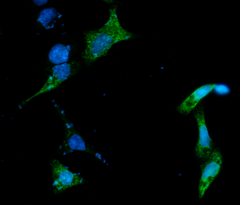
-

ICC staining of FITC anti-6-His Epitope Tag antibody (clone 6-His) on HeLa cells transfected with Posi-Tag plasmid. The cells were fixed with 4% PFA, and permeabilized with a buffer containing 0.5% Triton X-100, and blocked with 5% fetal bovine serum in PBS. The cells were then incubated with 10 µg/mL of the primary antibody overnight at 4°C. Nuclei were counterstained with DAPI, and the slide was mounted with ProLong™ Gold Antifade Mountant. The image was captured with a 40X objective.
| Cat # | Size | Price | Quantity Check Availability | Save | ||
|---|---|---|---|---|---|---|
| 906105 | 100 µL | 336€ | ||||
His tags are commonly used as a method of tagging proteins for detection or purification. This antibody is raised again a polyhistidine tag (6-His or hexa His-tag).
Product DetailsProduct Details
- Verified Reactivity
- Epitope tag
- Reported Reactivity
- Species independent
- Antibody Type
- Monoclonal
- Host Species
- Mouse
- Immunogen
- Monoclonal 6-His antibody was raised against a recombinant protein containing the sequence HHHHHH.
- Formulation
- Phosphate-buffered solution + 0.03% Thimerosal + 50% Glycerol.
- Preparation
- The antibody was purified by affinity chromatography.
- Concentration
- 1 mg/mL
- Storage & Handling
- Store between 2°C and 8°C.
- Application
-
ICC - Quality tested
- Recommended Usage
-
Each lot of this antibody is quality control tested by immunocytochemistry. For immunocytochemistry, a concentration range of 5 - 10 μg/mL is recommended. It is recommended that the reagent be titrated for optimal performance for each application.
- Excitation Laser
-
Blue Laser (488 nm)
- Application Notes
-
The sequence of the protein flanking the poly His tag does not influence antibody binding. This antibody was subsequently purified via a protein-G column.
- Application References
-
- Deinert K, et al. 2001. J. Biol. Chem. 276:6000. (WB)
- Kojima H, et al. 2001. J. Biol. Chem. 276:19238. (IF) PubMed
- Lapinski PE, et al. 2000. J. Biol. Chem. 275:6831. (WB)
- Bartsch D, et al. 1998. Cell. 95:211. (IF)
- Product Citations
-
- RRID
-
AB_2565059 (BioLegend Cat. No. 906105)
Antigen Details
- Biology Area
- Cell Biology
- Gene ID
- NA
- UniProt
- View information about 6-His on UniProt.org
Related Pages & Pathways
Pages
Related FAQs
Other Formats
View All 6-His Reagents Request Custom Conjugation| Description | Clone | Applications |
|---|---|---|
| Anti-6-His Epitope Tag Affinity Matrix | 6-His | IP,Purification |
| Biotin anti-6-His Epitope Tag | 6-His | WB,ICC,IP |
| FITC anti-6-His Epitope Tag | 6-His | ICC |
| Purified anti-6-His Epitope Tag | 6-His | WB,ICC,IP |
| Direct-Blot™ HRP anti-6-His Epitope Tag | 6-His | WB |
| Alexa Fluor® 647 anti-6-His Epitope Tag | 6-His | ICC |
Customers Also Purchased
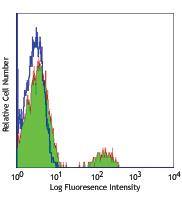
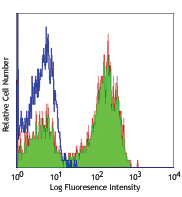
Compare Data Across All Formats
This data display is provided for general comparisons between formats.
Your actual data may vary due to variations in samples, target cells, instruments and their settings, staining conditions, and other factors.
If you need assistance with selecting the best format contact our expert technical support team.
-
Anti-6-His Epitope Tag Affinity Matrix
-
Biotin anti-6-His Epitope Tag

Western blot analysis of 0.5 µl Posi-tag (Cat. No. 931301) u... 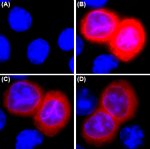
Immunofluorescence of His tagged plasmid transfected A549 ce... -
FITC anti-6-His Epitope Tag
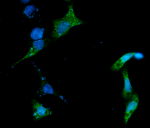
ICC staining of FITC anti-6-His Epitope Tag antibody (clone ... -
Purified anti-6-His Epitope Tag
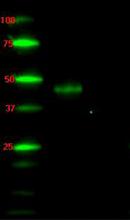
Western Blot showing specificity of 6-His Monoclonal Antibod... 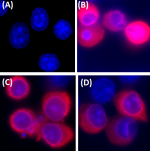
Hela cells transfected with multiple tag plasmid were fixed ... -
Direct-Blot™ HRP anti-6-His Epitope Tag
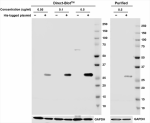
Western blot analysis of 15 µg cell lysates from HeLa cells ... -
Alexa Fluor® 647 anti-6-His Epitope Tag
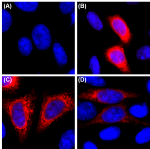
HeLa cells were transfected with (B-D) or without (A) His-ta...
 Login / Register
Login / Register 









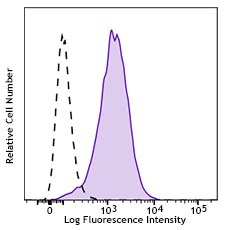
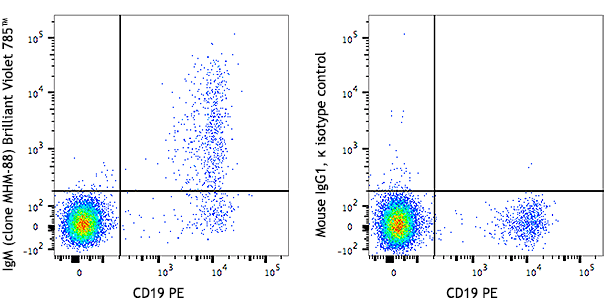



Follow Us